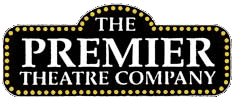

It is spring, a time of new beginnings, a time to start fresh, even more so than New Year’s. Therefore, we’d like to welcome you to the new website for The Premier Theatre Company. We hope you like it!
It’s bright and updated, and much more interactive, making it easier to find all the different and wonderful things we have to offer you. There’s also so much more content, including info on the hundreds of shows we’ve done over the last 30 years. This blog is one of those new additions. We’ll be using it to cover interesting subjects, and we’ll ask guest authors to join us. Take a look!
This is also the beginning of our 2020 season. A new show we have never done, another new beginning, was close to opening, when everything came to a grinding halt. As you may already know, productions ranging from Broadway shows to high school musicals, along with regional and community theater performances, have had to either begin rescheduling or be cancelled. Everyone is basically trying to outguess a virus.
We here at the Shore made it through Sandy and worked to help all those we could. But that was working around things like drying out the carpet and getting the sand out of the Grand Arcade. This is different. We don’t have an end date like we do when we’re waiting for a storm to pass.
When will things re-open? When will people know it’s safe to go out after that, or feel comfortable spending money on a ticket? We don’t know for sure, but we hope it’s soon. We miss all of you out there in the dark!
While this is being sorted out, everyone is staying at home and trying to teach their kids geography they forgot 30 years ago, or math they never encountered before. If you’re looking to learn something more interesting, here’s a crash course in how community theatre puts together a show.
The first step is deciding what show to produce. What shows are available? Do you choose a classic like Oklahoma! or something new? Audience members often ask why we can’t do shows that are running on Broadway. Did you know that if you are within 50 miles of Broadway “as the crow flies”, any shows running there aren’t available to produce for other theaters? Now you know why.
So back to the list of choices we go! When selecting a show to produce, the team asks several questions:
Like most theatre companies, we have decision makers who weigh all these questions, make a list of options, and choose what shows to apply for. Yes, you have to get permission to produce a play or musical from a publisher (unless you have spent the last ten years writing it yourself, of course). Once you have permission, you have to pay for each performance, along with the music.
Now we’ve gotten through the red tape and finished with the legalese side of things. Now it comes time to put a show together. This is when the magic of community theatre really begins. Several people who pretty much all have full time jobs come together, mostly as volunteers in their free time, to create something special. Yes, there are people who do this for a living, but there are way more who do it simply for the love of the art. They do it because they love the people they’re working with and want bring shows to communities who can’t afford to go to professional shows. They do it share their craft with a fresh generation. It’s all hard work, but people do it because they want to.
Hopefully a staff is in place by now: a director, music director, a choreographer, and directors for the costumes, set, and lighting. From there, it’s time to have auditions, where people who want to perform try out, showing off their best song, accent, or tap routine. Those who are chosen to become the characters in the show start rehearsing. They might be rehearsing onstage in a fully equipped theatre. They could be rehearsing weekends in someone’s basement because the theatre space can’t be used until the show goes up. Wherever they are, those people have probably set aside things like bills, families, school, or jobs that have nothing to do with the part they are playing. Such is the challenge of community theater.
Then there are the people who create the visual magic: the sets, costumes, and the lights and sound that immerse you into a show. This is where you truly need a village to make magic happen. These are the people who sew costumes, build sets, and work the lighting. They might be people working with their friends and neighbors, or the librarian, mailman, pharmacist or commuter who just got off the bus from New York. Who has a pick-up truck to get the couch for Act 2? Will the dresses we made for a different show two years ago fit this cast? These are all things we must consider.
So, all these people spend weeks building a show for you, the audience, to sit and watch for an hour or two. In the coming months, we’ll go into more detail on all the different areas of a production, but take a minute to appreciate what took them many long hours to put together for you. Show your appreciation by buying a ticket. And buy it ahead of time – they probably need to buy more lumber or sequins!
